 https://media.ifrfocus.com/wp-content/uploads/2025/11/25102121/instrument-course-ai-features.png
1000
1250
IFR Focus Team
https://media.ifrfocus.com/wp-content/uploads/2025/07/14115136/IFR-Focus-Logo_White_Blue_Web-01.png
IFR Focus Team2025-11-25 11:00:272025-11-25 11:01:01Smarter IFR Training: Sporty’s Instrument Course Adds New Aviation Intelligence Tools
https://media.ifrfocus.com/wp-content/uploads/2025/11/25102121/instrument-course-ai-features.png
1000
1250
IFR Focus Team
https://media.ifrfocus.com/wp-content/uploads/2025/07/14115136/IFR-Focus-Logo_White_Blue_Web-01.png
IFR Focus Team2025-11-25 11:00:272025-11-25 11:01:01Smarter IFR Training: Sporty’s Instrument Course Adds New Aviation Intelligence ToolsLATEST POSTS
 https://media.ifrfocus.com/wp-content/uploads/2025/11/25102121/instrument-course-ai-features.png
1000
1250
IFR Focus Team
https://media.ifrfocus.com/wp-content/uploads/2025/07/14115136/IFR-Focus-Logo_White_Blue_Web-01.png
IFR Focus Team2025-11-25 11:00:272025-11-25 11:01:01Smarter IFR Training: Sporty’s Instrument Course Adds New Aviation Intelligence Tools
https://media.ifrfocus.com/wp-content/uploads/2025/11/25102121/instrument-course-ai-features.png
1000
1250
IFR Focus Team
https://media.ifrfocus.com/wp-content/uploads/2025/07/14115136/IFR-Focus-Logo_White_Blue_Web-01.png
IFR Focus Team2025-11-25 11:00:272025-11-25 11:01:01Smarter IFR Training: Sporty’s Instrument Course Adds New Aviation Intelligence Tools
Ask the IFR Expert: What do I do when the avionics glitch?
Modern IFR panels are incredibly capable, but they’re still computers—and sometimes they glitch at the worst possible moment. When automation stumbles in IMC or during a high-workload phase, I fall back on a simple sequence: stabilize, simplify, and strategize.

Practical IFR: Off-Route Thinking
Student pilots learn, by rote, the visibility differences between…

Quiz: Regulations for Instrument Flight Rules
Instrument flying requires you to know a lot of rules, from clearance limits to airspace requirements. Can you answer all these regulations questions and stay legal in the IFR system?
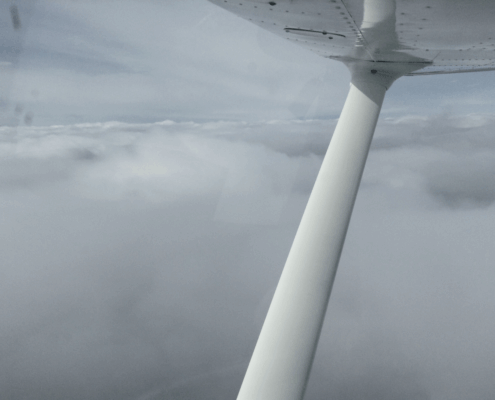
It’s Personal: Managing Your Own Minimums
Your personal minimums aren’t just numbers on a checklist—they’re dynamic limits that should evolve as your skills and experience do. In this month’s IFR Focus, Master Instructor Elaine Kauh rethinks the idea of “personal minimums” as personal operating ranges, complete with red lines, yellow arcs, and moving needles. It’s a fresh, practical look at how to monitor proficiency and manage IFR risk.
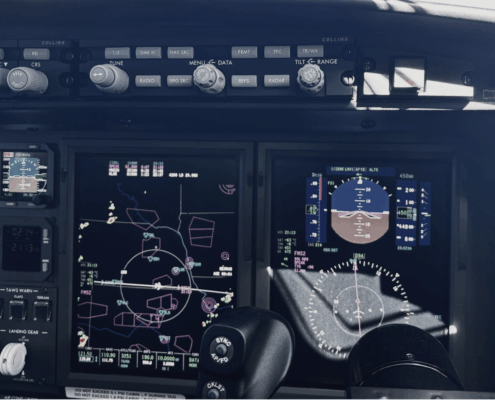
Video Tip: Using the Flight Director
Think of the flight director as your own personal autopilot coach—it shows you exactly what inputs to make to stay on course and on glidepath. In this IFR Focus video tip, we’ll explain how to interpret those familiar magenta “V-bars,” how they differ from the autopilot, and why mastering the flight director can make your hand-flown approaches smoother and more precise.
VIDEOS
 https://media.ifrfocus.com/wp-content/uploads/2025/10/29111209/using-the-flight-director.png
1000
1250
IFR Focus Team
https://media.ifrfocus.com/wp-content/uploads/2025/07/14115136/IFR-Focus-Logo_White_Blue_Web-01.png
IFR Focus Team2025-11-07 08:55:212025-11-05 11:05:21Video Tip: Using the Flight Director
https://media.ifrfocus.com/wp-content/uploads/2025/10/29111209/using-the-flight-director.png
1000
1250
IFR Focus Team
https://media.ifrfocus.com/wp-content/uploads/2025/07/14115136/IFR-Focus-Logo_White_Blue_Web-01.png
IFR Focus Team2025-11-07 08:55:212025-11-05 11:05:21Video Tip: Using the Flight Director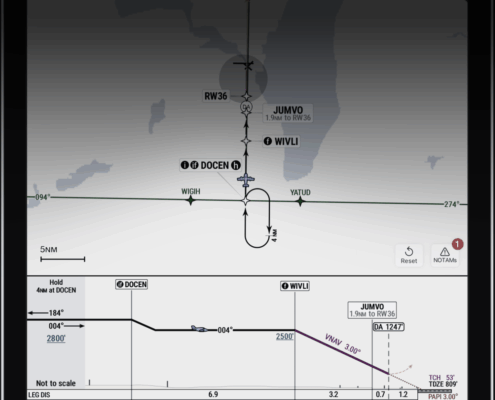 https://media.ifrfocus.com/wp-content/uploads/2025/10/21101007/Copy-of-Garmin-Smart-Charts.png
1000
1250
IFR Focus Team
https://media.ifrfocus.com/wp-content/uploads/2025/07/14115136/IFR-Focus-Logo_White_Blue_Web-01.png
IFR Focus Team2025-10-24 08:55:522025-10-21 10:10:45IFR Focus Video: SmartCharts in Action on a June Gloom Flight
https://media.ifrfocus.com/wp-content/uploads/2025/10/21101007/Copy-of-Garmin-Smart-Charts.png
1000
1250
IFR Focus Team
https://media.ifrfocus.com/wp-content/uploads/2025/07/14115136/IFR-Focus-Logo_White_Blue_Web-01.png
IFR Focus Team2025-10-24 08:55:522025-10-21 10:10:45IFR Focus Video: SmartCharts in Action on a June Gloom Flight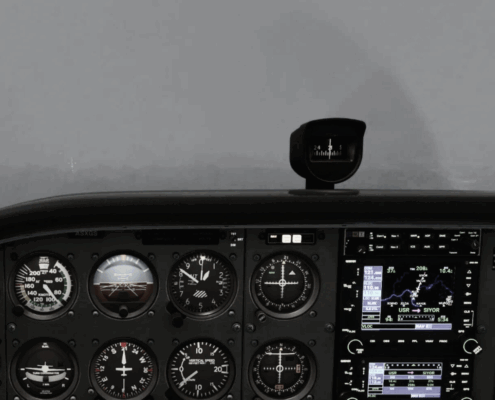 https://media.ifrfocus.com/wp-content/uploads/2025/09/22102853/whats-wrong.png
1000
1250
Pilot Workshops
https://media.ifrfocus.com/wp-content/uploads/2025/07/14115136/IFR-Focus-Logo_White_Blue_Web-01.png
Pilot Workshops2025-09-23 08:55:282025-10-22 12:50:35New Interactive Series: What’s Wrong?
https://media.ifrfocus.com/wp-content/uploads/2025/09/22102853/whats-wrong.png
1000
1250
Pilot Workshops
https://media.ifrfocus.com/wp-content/uploads/2025/07/14115136/IFR-Focus-Logo_White_Blue_Web-01.png
Pilot Workshops2025-09-23 08:55:282025-10-22 12:50:35New Interactive Series: What’s Wrong?QUIZZES
 https://media.ifrfocus.com/wp-content/uploads/2025/03/16110656/Copy-of-regulations-for-IFR.png
1000
1250
Chris Clarke
https://media.ifrfocus.com/wp-content/uploads/2025/07/14115136/IFR-Focus-Logo_White_Blue_Web-01.png
Chris Clarke2025-11-14 08:55:342025-11-14 10:03:17Quiz: Regulations for Instrument Flight Rules
https://media.ifrfocus.com/wp-content/uploads/2025/03/16110656/Copy-of-regulations-for-IFR.png
1000
1250
Chris Clarke
https://media.ifrfocus.com/wp-content/uploads/2025/07/14115136/IFR-Focus-Logo_White_Blue_Web-01.png
Chris Clarke2025-11-14 08:55:342025-11-14 10:03:17Quiz: Regulations for Instrument Flight Rules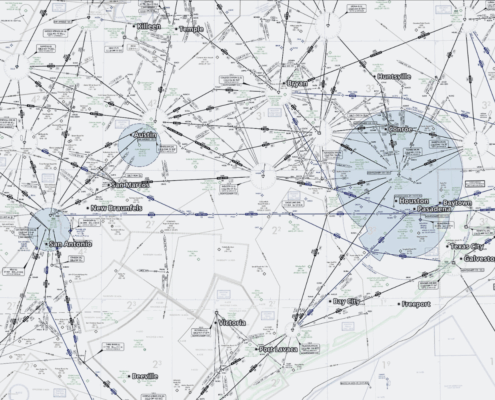 https://ifrfocus.com/wp-content/uploads/2025/10/chart-smart-MRA.png
1000
1250
Eric Radtke
https://media.ifrfocus.com/wp-content/uploads/2025/07/14115136/IFR-Focus-Logo_White_Blue_Web-01.png
Eric Radtke2025-10-29 08:55:292025-10-29 09:27:29Chart Smart: low altitude IFR enroute chart intersection symbol
https://ifrfocus.com/wp-content/uploads/2025/10/chart-smart-MRA.png
1000
1250
Eric Radtke
https://media.ifrfocus.com/wp-content/uploads/2025/07/14115136/IFR-Focus-Logo_White_Blue_Web-01.png
Eric Radtke2025-10-29 08:55:292025-10-29 09:27:29Chart Smart: low altitude IFR enroute chart intersection symbol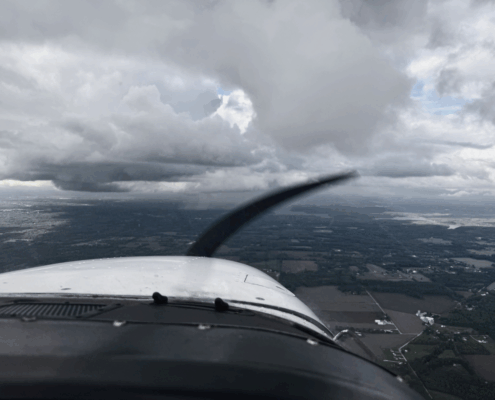 https://media.ifrfocus.com/wp-content/uploads/2023/02/07113237/quiz-preflight-planning-ifr-flight.png
1000
1250
IFR Focus Team
https://media.ifrfocus.com/wp-content/uploads/2025/07/14115136/IFR-Focus-Logo_White_Blue_Web-01.png
IFR Focus Team2025-10-10 08:55:332025-10-07 11:32:54Quiz: Preflight Planning an IFR Flight
https://media.ifrfocus.com/wp-content/uploads/2023/02/07113237/quiz-preflight-planning-ifr-flight.png
1000
1250
IFR Focus Team
https://media.ifrfocus.com/wp-content/uploads/2025/07/14115136/IFR-Focus-Logo_White_Blue_Web-01.png
IFR Focus Team2025-10-10 08:55:332025-10-07 11:32:54Quiz: Preflight Planning an IFR FlightARTICLES
 https://media.ifrfocus.com/wp-content/uploads/2025/11/25102121/instrument-course-ai-features.png
1000
1250
IFR Focus Team
https://media.ifrfocus.com/wp-content/uploads/2025/07/14115136/IFR-Focus-Logo_White_Blue_Web-01.png
IFR Focus Team2025-11-25 11:00:272025-11-25 11:01:01Smarter IFR Training: Sporty’s Instrument Course Adds New Aviation Intelligence Tools
https://media.ifrfocus.com/wp-content/uploads/2025/11/25102121/instrument-course-ai-features.png
1000
1250
IFR Focus Team
https://media.ifrfocus.com/wp-content/uploads/2025/07/14115136/IFR-Focus-Logo_White_Blue_Web-01.png
IFR Focus Team2025-11-25 11:00:272025-11-25 11:01:01Smarter IFR Training: Sporty’s Instrument Course Adds New Aviation Intelligence Tools https://media.ifrfocus.com/wp-content/uploads/2025/11/20172527/What-do-I-do-when-the-avionics-glitch.png
1000
1250
Eric Radtke
https://media.ifrfocus.com/wp-content/uploads/2025/07/14115136/IFR-Focus-Logo_White_Blue_Web-01.png
Eric Radtke2025-11-21 08:55:412025-11-20 17:25:44Ask the IFR Expert: What do I do when the avionics glitch?
https://media.ifrfocus.com/wp-content/uploads/2025/11/20172527/What-do-I-do-when-the-avionics-glitch.png
1000
1250
Eric Radtke
https://media.ifrfocus.com/wp-content/uploads/2025/07/14115136/IFR-Focus-Logo_White_Blue_Web-01.png
Eric Radtke2025-11-21 08:55:412025-11-20 17:25:44Ask the IFR Expert: What do I do when the avionics glitch? https://media.ifrfocus.com/wp-content/uploads/2025/11/10123215/Practical-IFR-Off-Route-Thinking.png
1000
1250
Jeff Van West
https://media.ifrfocus.com/wp-content/uploads/2025/07/14115136/IFR-Focus-Logo_White_Blue_Web-01.png
Jeff Van West2025-11-18 08:55:262025-11-19 22:32:11Practical IFR: Off-Route Thinking
https://media.ifrfocus.com/wp-content/uploads/2025/11/10123215/Practical-IFR-Off-Route-Thinking.png
1000
1250
Jeff Van West
https://media.ifrfocus.com/wp-content/uploads/2025/07/14115136/IFR-Focus-Logo_White_Blue_Web-01.png
Jeff Van West2025-11-18 08:55:262025-11-19 22:32:11Practical IFR: Off-Route ThinkingWEBINARS
 https://media.ifrfocus.com/wp-content/uploads/2025/02/16111709/Copy-of-instrument-written-webinar.png
1000
1250
Eric Radtke
https://media.ifrfocus.com/wp-content/uploads/2025/07/14115136/IFR-Focus-Logo_White_Blue_Web-01.png
Eric Radtke2025-02-23 08:55:232025-06-16 11:17:17Webinar Video: How to Ace Your FAA Instrument Written
https://media.ifrfocus.com/wp-content/uploads/2025/02/16111709/Copy-of-instrument-written-webinar.png
1000
1250
Eric Radtke
https://media.ifrfocus.com/wp-content/uploads/2025/07/14115136/IFR-Focus-Logo_White_Blue_Web-01.png
Eric Radtke2025-02-23 08:55:232025-06-16 11:17:17Webinar Video: How to Ace Your FAA Instrument Written https://media.ifrfocus.com/wp-content/uploads/2025/02/16111937/Copy-of-simulator-webinar.png
1000
1250
IFR Focus Team
https://media.ifrfocus.com/wp-content/uploads/2025/07/14115136/IFR-Focus-Logo_White_Blue_Web-01.png
IFR Focus Team2025-02-16 08:55:542025-06-16 11:19:45Webinar Video: Home Simulation For IFR Training and Proficiency—a Pilot’s Perspective
https://media.ifrfocus.com/wp-content/uploads/2025/02/16111937/Copy-of-simulator-webinar.png
1000
1250
IFR Focus Team
https://media.ifrfocus.com/wp-content/uploads/2025/07/14115136/IFR-Focus-Logo_White_Blue_Web-01.png
IFR Focus Team2025-02-16 08:55:542025-06-16 11:19:45Webinar Video: Home Simulation For IFR Training and Proficiency—a Pilot’s Perspective https://media.ifrfocus.com/wp-content/uploads/2024/11/16112153/Copy-of-register-for-ipad-webinar-ipn.png
1000
1250
IFR Focus Team
https://media.ifrfocus.com/wp-content/uploads/2025/07/14115136/IFR-Focus-Logo_White_Blue_Web-01.png
IFR Focus Team2024-11-21 08:55:322025-06-16 11:22:01Webinar Video: Flying with the iPad as a Digital Copilot
https://media.ifrfocus.com/wp-content/uploads/2024/11/16112153/Copy-of-register-for-ipad-webinar-ipn.png
1000
1250
IFR Focus Team
https://media.ifrfocus.com/wp-content/uploads/2025/07/14115136/IFR-Focus-Logo_White_Blue_Web-01.png
IFR Focus Team2024-11-21 08:55:322025-06-16 11:22:01Webinar Video: Flying with the iPad as a Digital CopilotIFR TRAINING
 https://media.ifrfocus.com/wp-content/uploads/2025/09/22102853/whats-wrong.png
1000
1250
Pilot Workshops
https://media.ifrfocus.com/wp-content/uploads/2025/07/14115136/IFR-Focus-Logo_White_Blue_Web-01.png
Pilot Workshops2025-09-23 08:55:282025-10-22 12:50:35New Interactive Series: What’s Wrong?
https://media.ifrfocus.com/wp-content/uploads/2025/09/22102853/whats-wrong.png
1000
1250
Pilot Workshops
https://media.ifrfocus.com/wp-content/uploads/2025/07/14115136/IFR-Focus-Logo_White_Blue_Web-01.png
Pilot Workshops2025-09-23 08:55:282025-10-22 12:50:35New Interactive Series: What’s Wrong?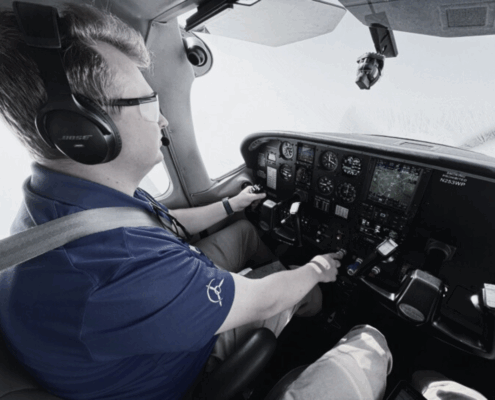 https://media.ifrfocus.com/wp-content/uploads/2025/08/19095034/The-Foundation-of-IFR-Flying-Basic-Attitude-Instrument-Skills.png
1000
1250
Eric Radtke
https://media.ifrfocus.com/wp-content/uploads/2025/07/14115136/IFR-Focus-Logo_White_Blue_Web-01.png
Eric Radtke2025-08-26 08:55:522025-08-19 09:52:47The Foundation of IFR Flying: Basic Attitude Instrument Skills
https://media.ifrfocus.com/wp-content/uploads/2025/08/19095034/The-Foundation-of-IFR-Flying-Basic-Attitude-Instrument-Skills.png
1000
1250
Eric Radtke
https://media.ifrfocus.com/wp-content/uploads/2025/07/14115136/IFR-Focus-Logo_White_Blue_Web-01.png
Eric Radtke2025-08-26 08:55:522025-08-19 09:52:47The Foundation of IFR Flying: Basic Attitude Instrument Skills https://media.ifrfocus.com/wp-content/uploads/2025/08/01115405/Too-Much-Info-How-to-Focus-IFR-Thinking.png
1000
1250
James Onieal
https://media.ifrfocus.com/wp-content/uploads/2025/07/14115136/IFR-Focus-Logo_White_Blue_Web-01.png
James Onieal2025-08-12 08:55:292025-08-18 21:43:38Too Much Info: How to Focus IFR Thinking
https://media.ifrfocus.com/wp-content/uploads/2025/08/01115405/Too-Much-Info-How-to-Focus-IFR-Thinking.png
1000
1250
James Onieal
https://media.ifrfocus.com/wp-content/uploads/2025/07/14115136/IFR-Focus-Logo_White_Blue_Web-01.png
James Onieal2025-08-12 08:55:292025-08-18 21:43:38Too Much Info: How to Focus IFR ThinkingTOOLS & TECH
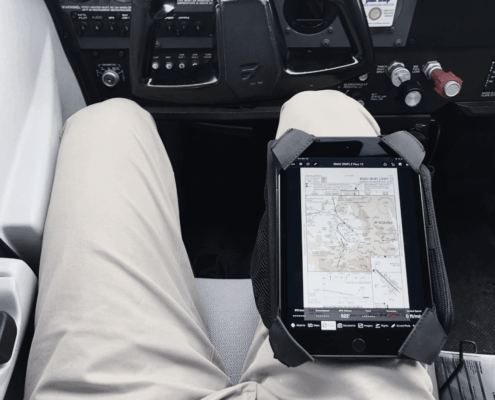 https://media.ifrfocus.com/wp-content/uploads/2025/10/14131925/Electronic-Flight-Bags%E2%80%94Legal-Briefing.png
1000
1250
Bret Koebbe
https://media.ifrfocus.com/wp-content/uploads/2025/07/14115136/IFR-Focus-Logo_White_Blue_Web-01.png
Bret Koebbe2025-10-21 08:55:542025-10-21 09:42:52Electronic Flight Bags—Legal Briefing
https://media.ifrfocus.com/wp-content/uploads/2025/10/14131925/Electronic-Flight-Bags%E2%80%94Legal-Briefing.png
1000
1250
Bret Koebbe
https://media.ifrfocus.com/wp-content/uploads/2025/07/14115136/IFR-Focus-Logo_White_Blue_Web-01.png
Bret Koebbe2025-10-21 08:55:542025-10-21 09:42:52Electronic Flight Bags—Legal Briefing https://media.ifrfocus.com/wp-content/uploads/2025/06/23092311/staying-one-step-ahead.png
1000
1250
Bret Koebbe
https://media.ifrfocus.com/wp-content/uploads/2025/07/14115136/IFR-Focus-Logo_White_Blue_Web-01.png
Bret Koebbe2025-06-24 09:19:302025-06-23 09:23:47Keeping One Step Ahead of ATC when flying IFR
https://media.ifrfocus.com/wp-content/uploads/2025/06/23092311/staying-one-step-ahead.png
1000
1250
Bret Koebbe
https://media.ifrfocus.com/wp-content/uploads/2025/07/14115136/IFR-Focus-Logo_White_Blue_Web-01.png
Bret Koebbe2025-06-24 09:19:302025-06-23 09:23:47Keeping One Step Ahead of ATC when flying IFR https://media.ifrfocus.com/wp-content/uploads/2025/05/16110001/Copy-of-Flight-plan-codes.png
1000
1250
Bret Koebbe
https://media.ifrfocus.com/wp-content/uploads/2025/07/14115136/IFR-Focus-Logo_White_Blue_Web-01.png
Bret Koebbe2025-05-16 12:21:382025-06-16 11:00:15How to set up aircraft equipment codes in aviation apps to file IFR flight plans
https://media.ifrfocus.com/wp-content/uploads/2025/05/16110001/Copy-of-Flight-plan-codes.png
1000
1250
Bret Koebbe
https://media.ifrfocus.com/wp-content/uploads/2025/07/14115136/IFR-Focus-Logo_White_Blue_Web-01.png
Bret Koebbe2025-05-16 12:21:382025-06-16 11:00:15How to set up aircraft equipment codes in aviation apps to file IFR flight plansRESOURCES
 https://media.ifrfocus.com/wp-content/uploads/2025/05/16113108/Copy-of-scholarship-directory.png
1000
1250
IFR Focus Team
https://media.ifrfocus.com/wp-content/uploads/2025/07/14115136/IFR-Focus-Logo_White_Blue_Web-01.png
IFR Focus Team2025-05-16 09:00:122025-06-16 11:31:16Browse our Free Scholarship Directory
https://media.ifrfocus.com/wp-content/uploads/2025/05/16113108/Copy-of-scholarship-directory.png
1000
1250
IFR Focus Team
https://media.ifrfocus.com/wp-content/uploads/2025/07/14115136/IFR-Focus-Logo_White_Blue_Web-01.png
IFR Focus Team2025-05-16 09:00:122025-06-16 11:31:16Browse our Free Scholarship Directory https://media.ifrfocus.com/wp-content/uploads/2025/02/16111709/Copy-of-instrument-written-webinar.png
1000
1250
IFR Focus Team
https://media.ifrfocus.com/wp-content/uploads/2025/07/14115136/IFR-Focus-Logo_White_Blue_Web-01.png
IFR Focus Team2024-01-29 08:55:592025-06-16 11:33:08A Comprehensive Guide to the FAA Knowledge Test
https://media.ifrfocus.com/wp-content/uploads/2025/02/16111709/Copy-of-instrument-written-webinar.png
1000
1250
IFR Focus Team
https://media.ifrfocus.com/wp-content/uploads/2025/07/14115136/IFR-Focus-Logo_White_Blue_Web-01.png
IFR Focus Team2024-01-29 08:55:592025-06-16 11:33:08A Comprehensive Guide to the FAA Knowledge Test

